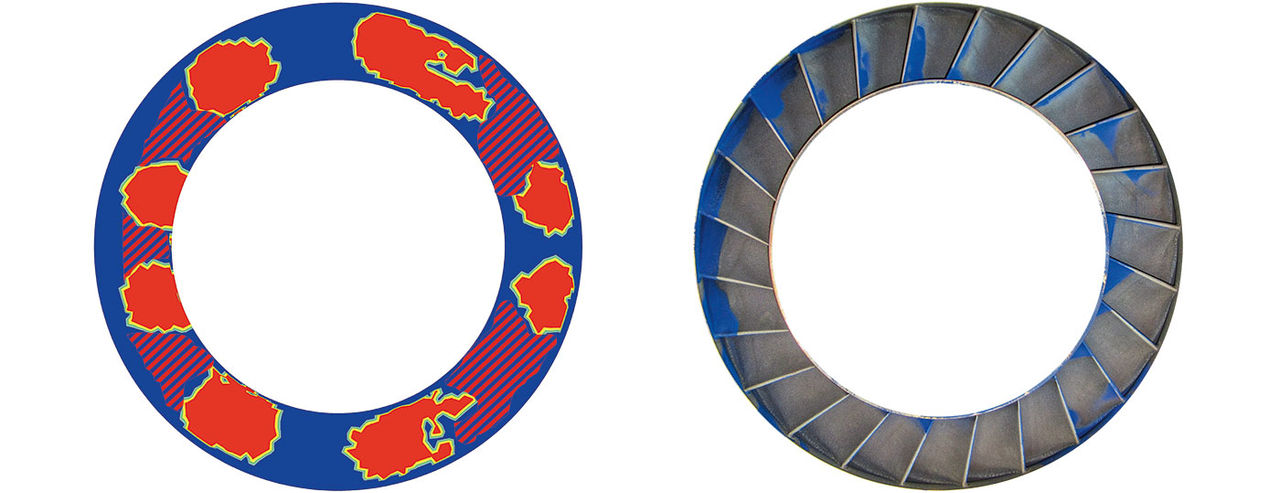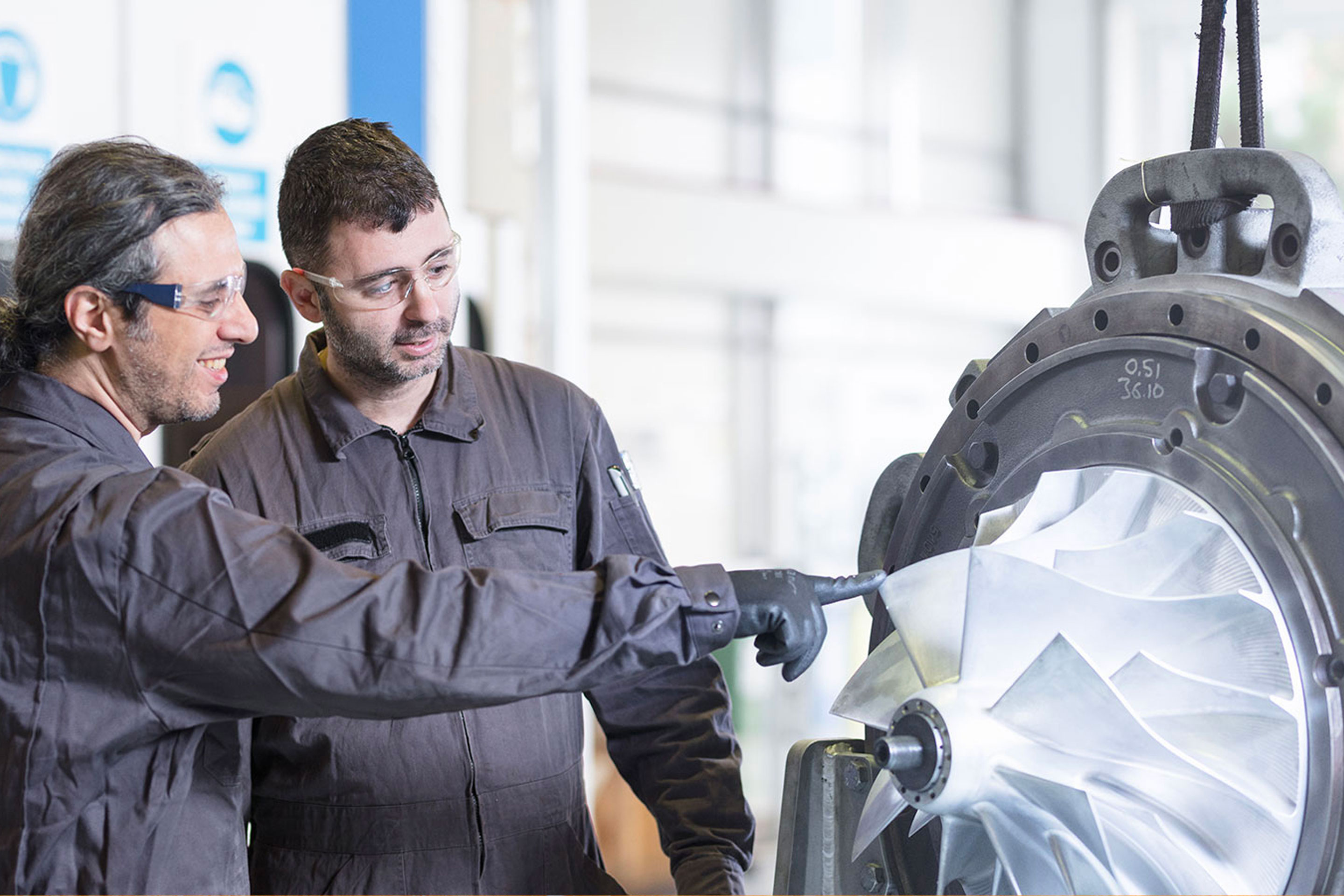By carefully following ABB guidelines, operators can perform turbine cleaning while the engine is in operation, minimizing system downtime. Turbine cleaning is complex. To provide innovative turbine cleaning systems, ABB Turbocharging invests in extensive development and testing.
Operators are well aware of the fouling that can be caused by combustion residues emanating from their engines and resulting in deposits in the turbine stage of the turbocharger. To counteract these unwanted effects and to guarantee reliable and efficient operation at all times, effective turbine cleaning needs to be carried out while the engine is in operation.
Guidelines for operators
ABB develops and provides effective turbine cleaning systems and procedures. Operators can minimize the unwanted accumulation of exhaust gas particles on the nozzle ring, turbine blades and casing if the recommended procedure is followed very meticulously. This will avoid performance degradation, inadmissible blade excitation and, ultimately, breakdown of the turbocharger.
Development first
Turbine cleaning is a complex procedure and has been extensively developed and tested by ABB Turbocharging (see box – ABB’s turbine cleaning system: behind the scenes). ABB cleaning systems take full account of all the inherent complexities involved. This commitment emphasizes how important it is for operators to follow exactly the guidelines set out by ABB.
ABB provides appropriate systems
Water is the preferred medium for cleaning, although – in rare cases – granulate may be used. The medium is periodically injected through one or several nozzles, carefully arranged in the gas inlet or turbine casing upstream of the nozzle ring. The design of the turbine cleaning system is aimed at different and to some extent opposing targets.
 Water distribution on a nozzle ring. Left: result of a computer simulation (in red/hatched: cleaned area). Right: experimental results. The blue paint denotes the non-washed regions. The results correspond with the cleaning effects in the field
Water distribution on a nozzle ring. Left: result of a computer simulation (in red/hatched: cleaned area). Right: experimental results. The blue paint denotes the non-washed regions. The results correspond with the cleaning effects in the field
ABB’s turbine cleaning system: behind the scenes
Extensive simulation and testing have made it possible to design optimal cleaning systems for every single ABB turbocharger series. Meeting both targets – efficient water distribution and minimization of water impact on hot surfaces – is the aim of every ABB cleaning system. The position, angle and water mass flow of each injector are carefully chosen in each case.
The first target (homogeneous water distribution) is the result of development work involving virtual prototyping, in which the injection of water into the exhaust gas stream through the turbine or gas inlet casing is simulated. Numerous possible designs of cleaning nozzles and water injection conditions are simulated on ABB Turbocharging’s high performance computing cluster. Subsequently, a hardware prototype of the system is developed and tested in the laboratories under hot gas conditions. This step not only verifies the virtual prototyping models and methods but is also designed to continuously improve them.
The second target (determination of the impact of water on surfaces) is achieved as a result
of detailed analyses of the water distribution on the surfaces of the casings. This distribution serves as input data for thermomechanical fatigue simulations. The latter allow an assessment of the stress levels in the wetted material, leading to a possible redesign of turbocharger parts.
Finally, every newly developed cleaning system undergoes a strict ABB internal quality approval process and field tests with various customers and installations.
First target: homogeneous water distribution
To achieve the best cleaning results, the water is homogeneously distributed over the whole circumference of the nozzle ring. This also ensures an even contraction of the parts, thereby avoiding local deformation effects where blade tips would rub on static parts during a turbine cleaning cycle.
Second target: impact of water on surfaces
The amount of water impinging on surfaces of the hot gas path – for example the gas inlet casing – has to be carefully managed. The cleaning system considers the thermal shock due to wetted areas and avoids any damage to parts.
Customers requiring support with turbine cleaning during operation can contact ABB Turbocharging at any time.














